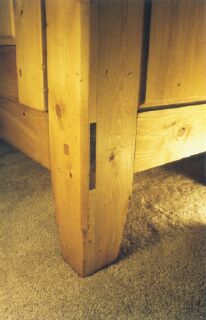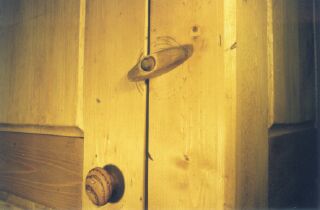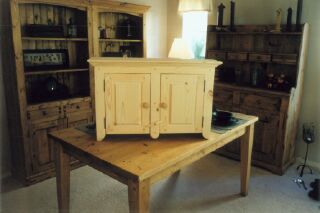|
|
|
|
|
|
|
|
|
|
|
|
|
|
|
|
|
|
|
|
|
|
|
|
|
|
|
|
|
|
|
|
|
|
|
|
|
|
|
|
|
|
|
|
|
|
|
|
|
|
|
|
 |
 |
 |
 |
|
|
 |
 |
 |
 |
 |
 |
 |
 |
 |
|
|
|
 |
 |
 |
| Similar to their European ancestors, early Canadian settlers didn't build cabinetry into their homes as we do today. Cabinets were simply individual pieces of furnishing arranged together, each serving their own purpose in the home. |
 |
|
|
 |
 |
 |
 |
 |
 |
 |
 |
 |
 |
 |
 |
|
|
 |
 |
 |
 |
 |
 |
 |
 |
|
|
|
 |
 |
 |
| Chimney Cupboards were a popular item of kitchen cabinetry dating back to the early 1800`s. These tall narrow cupboards were most commonly used as a pantry in which to store dry goods, linens, and kitchen cookware. In wealthier homes, more elaborate versions of this piece were nicknamed Bonnet Cupboards and used to store ladies hats and linens. These cupboards were often elevated on legs in order to keep dampness from spoiling their contents. |
 |
|
|
 |
 |
 |
 |
 |
 |
 |
 |
 |
 |
 |
 |
 |
 |
 |
 |
 |
 |
 |
 |
 |
 |
 |
 |
 |
 |
 |
 |
|
|
|
 |
 |
 |
| This particular piece is distinguished by its paneled sides and adjustable shelving and would have been commonplace in the mid 1800`s. |
 |
|
 |
 |
 |
 |
 |
 |
 |
 |
 |
 |
 |
 |
|
 |
 |
 |
 |
 |
 |
 |
 |
 |
 |
 |
 |
 |
 |
 |
 |
 |
 |
 |
 |
|
 |
 |
 |
|
 |
 |
 |
 |
|
|
|
 |
 |
 |
| Tenon held in place with wooden nail. |
 |
|
|
|
 |
 |
 |
 |
 |
 |
 |
 |
 |
 |
 |
 |
 |
 |
 |
 |
|
|
 |
 |
 |
|
|
 |
 |
 |
 |
 |
 |
 |
|
|
|
 |
 |
 |
| Years ago kitchen cabinetry didn`t exist as it does today. Early kitchen cabinets were individual pieces of furniture ranging from large items like dish dressers all the way down to small, space saving, wall mounted cupboards. |
 |
|
|
 |
 |
 |
 |
 |
 |
 |
 |
 |
 |
 |
 |
 |
 |
 |
 |
 |
 |
|
|
|
 |
 |
 |
| This example of an early wall cupboard was commonly used from the early 1700`s all the way to the late 1800`s as a medicine cabinet or small kitchen cabinet in rural homes. |
 |
|
|
|
 |
 |
 |
 |
 |
 |
 |
 |
 |
 |
 |
 |
 |
 |
 |
 |
 |
 |
 |
 |
|
 |
 |
 |
 |
 |
 |
|
|
 |
 |
 |
 |
 |
 |
 |
|
|
|
 |
 |
 |
| Bookcases became commonplace later in the 1700`s. Early examples ranged from simple shelving to more complex cabinetry including cupboards and drawers. In later years glass doors began to appear protecting their valuable contents from humidity. |
 |
|
|
 |
 |
 |
 |
 |
 |
 |
 |
 |
 |
 |
 |
|
|
|
 |
 |
 |
| This particulae example dates back to the early 1800`s and is distinguished by its row of small drawers, twin cabinets and lack of glass doors on the upper shelving. |
|
| (also available in single units) |
 |
|
|
|
 |
 |
 |
 |
 |
 |
 |
 |
 |
 |
 |
 |
 |
 |
 |
 |
 |
 |
 |
 |
 |
 |
|
 |
 |
 |
 |
 |
 |
 |
 |
 |
 |
 |
 |
 |
 |
 |
 |
 |
 |
 |
 |
 |
 |
 |
 |
 |
 |
 |
 |
 |
 |
 |
|
|
 |
 |
 |
 |
 |
 |
 |
 |
 |
 |
 |
 |
 |
 |
 |
|
|
 |
 |
 |
 |
 |
 |
 |
 |
 |
 |
 |
 |
 |
 |
|
|
|
 |
 |
 |
| Although computers were not commonplace until the late 1900`s, this computer center was custom built for a client using the same Old World joinery and simple design shared by all our furniture. We simply mated an early open bookcase with a writing desk. Both of these items can be separated and arranged individually, should they not be needed as a computer center in the future. |
 |
|
|
 |
 |
 |
 |
 |
 |
 |
 |
 |
 |
 |
 |
 |
 |
 |
 |
 |
 |
 |
 |
 |
 |
 |
 |
 |
 |
 |
 |
 |
 |
 |
|
|
 |
 |
 |
 |
|
 |
 |
 |
 |
 |
 |
 |
 |
|
|
|
 |
 |
 |
| Door panel style and rail joined with wooden nail. |
 |
|
|
|
 |
 |
 |
 |
 |
 |
 |
 |
 |
 |
|
|










